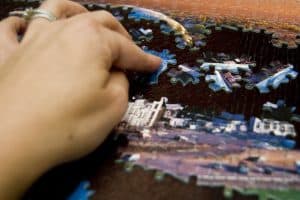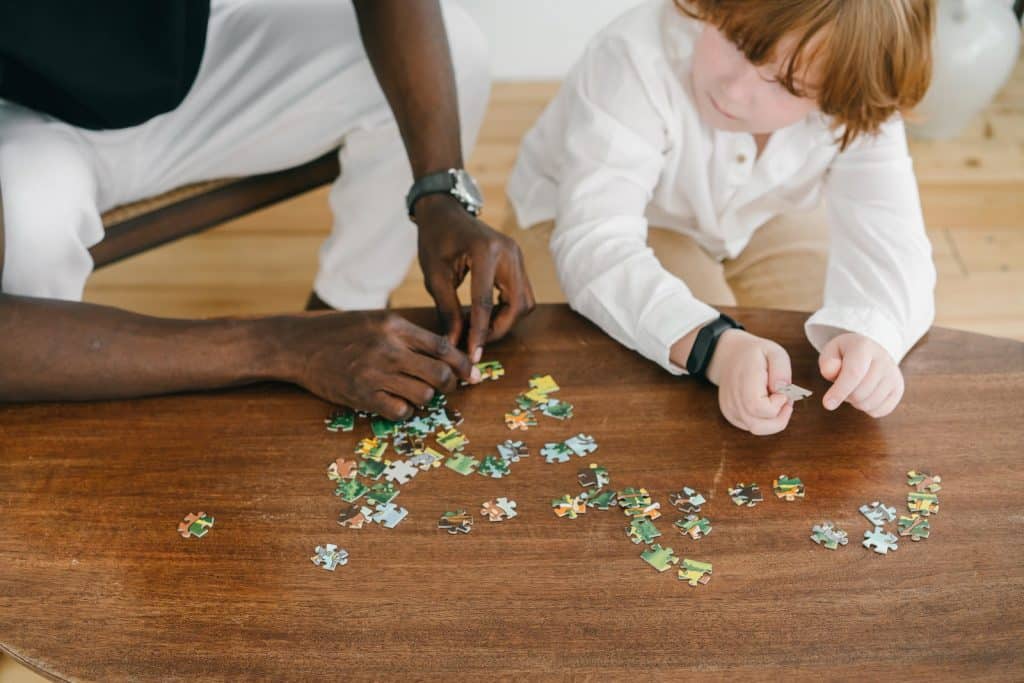You might remember the first jigsaw puzzle you solved – a cardboard puzzle with bold, colorful shapes, and a tiny number of pieces. Whether it was a basic scene or a realistic jigsaw puzzle depicting your favorite cartoon character, the feeling of fitting the final jigsaw piece was exhilarating. As these early puzzles evolved into larger jigsaw puzzles with increasing complexity, a crucial transition was at work – the development of cognitive and emotional skills.
Jigsaw Puzzles: A Concordance of Cognitive Capabilities

Jigsaw puzzles encapsulate a complete picture of cognitive capabilities that can often be overlooked. Unlike the linear progression of solving problems in subjects like math or computer science, jigsaw puzzles challenge us with multiple blocks of information simultaneously. The organization of jigsaw pieces to make sense of the whole scenario, remembering the placement and color of individual pieces, and observing for patterns, shapes, and even same color sections are skills that are sharpened through solving jigsaw puzzles.
The Influence of Complexity
A typical jigsaw has varying degrees of complexity. From the first jigsaw puzzle consisting of just a few puzzle pieces to increasingly realistic jigsaw puzzles with hundreds or even thousands of pieces, the jigsaw puzzle complexity directly affects how intensively the brain gets involved. The corner pieces or the straight borders are usually solved first because of their distinguishable shapes—still, the complexity increases when you move toward the core of the puzzle, with most pieces having four edges.
Existing research and personal experience from puzzle enthusiasts has shown a clear link between puzzle complexity and skill development. Consider the hardness results in computational complexity, which is used in computer science to gauge the difficulty of solving a problem. The higher the complexity, the more challenging the problem becomes, and solving it requires more advanced skills.
Skill Development Fostered by Jigsaw Puzzles

Solving complex jigsaw puzzles enhances both cognitive and emotional skills:
Cognitive Skills:
The jigsaw puzzle piece identification cultivates detail orientation and helps in improving memory. The entire puzzle’s computational complexity encourages problem-solving abilities and promotes a general understanding that makes sense in a broader context.
Emotional Skills:
The more extensive puzzle-solving process imparts patience and persistence, thus amplifying stress relief capabilities. Completing a complex jigsaw puzzle also increases self-confidence, as one gains satisfaction and a sense of achievement.
Enhancing Development through Progressive Complexity
The role of progressive complexity extends beyond just keeping the brain active and adds subtler dimensions to cognitive development. Puzzles with a higher puzzle size, ambiguous piece shape, or more color variations can create a computational complexity that stimulates cognitive growth in the same way more advanced concepts in computer science might.
Elevating jigsaw puzzle complexity also aligns with the cognitive development theory’s idea of ‘scaffolding’. As wooden puzzles or cardboard puzzles are replaced by more sophisticated and realistic jigsaw puzzles, the learner builds upon the knowledge and skills developed from earlier experiences.
Jigsaw Puzzle Complexity and Age Groups
The right level of jigsaw puzzle complexity is age-dependent and directly influences the associated layers of cognitive and emotional development. Young children may start with wooden jigsaws with fewer pieces while adults might prefer a more realistic jigsaw puzzle of a landscape or a scene from nature with much more pieces.
Choosing the Right Jigsaw Puzzle Complexity

It’s significant to choose puzzles that match our skills and progressively increase the complexity. The key is to begin with lower complexity levels, such as puzzles with conspicuous shapes, corners, or edge pieces, before moving on to the more complicated puzzles. The intricate patterns, and minimal differences in piece shapes, and colors should be saved for the advanced stages.
Jigsaw Puzzles and Cognitive Development in Personal and Social Contexts
Interestingly, the impact of jigsaw puzzles extends beyond individual cognitive growth. From promoting bonding during a family assembly of a large jigsaw puzzle to serving as a tool for social interaction, puzzles can help navigate and understand social differences. They also serve as a catalyst for developing empathy as individuals work together and consider others’ perspectives in order to complete the entire puzzle.
Puzzles as Tools for Charitable Initiatives and Awareness
Jigsaw puzzles have also had a significant impact on community initiatives. Charities, including the Golden Retriever Foundation and Autism Awareness, have used puzzles in fundraising and for spreading awareness about the causes they support. In fact, the world’s most expensive puzzle, valued at $27,000, was made by Rachel Page Elliot.
The Future of Jigsaw Puzzles: Virtual Realities and Beyond
Advancements in technology have expanded the scope of the traditional jigsaw puzzle. From wooden pieces, we’ve transitioned to digital versions and even 3D puzzles. The use of computer vision has made it possible to create virtual puzzles that can be solved on devices, broadening the reach and accessibility of these valuable tools for cognitive development.
Final Thoughts: The Role of Jigsaw Puzzle Complexity in Skill Development
The intricate world of puzzle-solving reaffirms the significant role that puzzle complexity plays in catalyzing cognitive and emotional skills. Our preliminary cardboard puzzles gradually pave the way for larger jigsaw puzzles, eventually leading to the most complex ones, like the Buffalo Games – one of the hardest puzzles due to its high level of complexity.
Now that we’ve uncovered how puzzle complexity contributes to skill-building, it’s time for you to dive into a world filled with jigsaw puzzle pieces. Start small with a wooden or a cardboard puzzle, then gradually introduce yourself or your children to more complex jigsaw puzzles to ensure optimal development.

